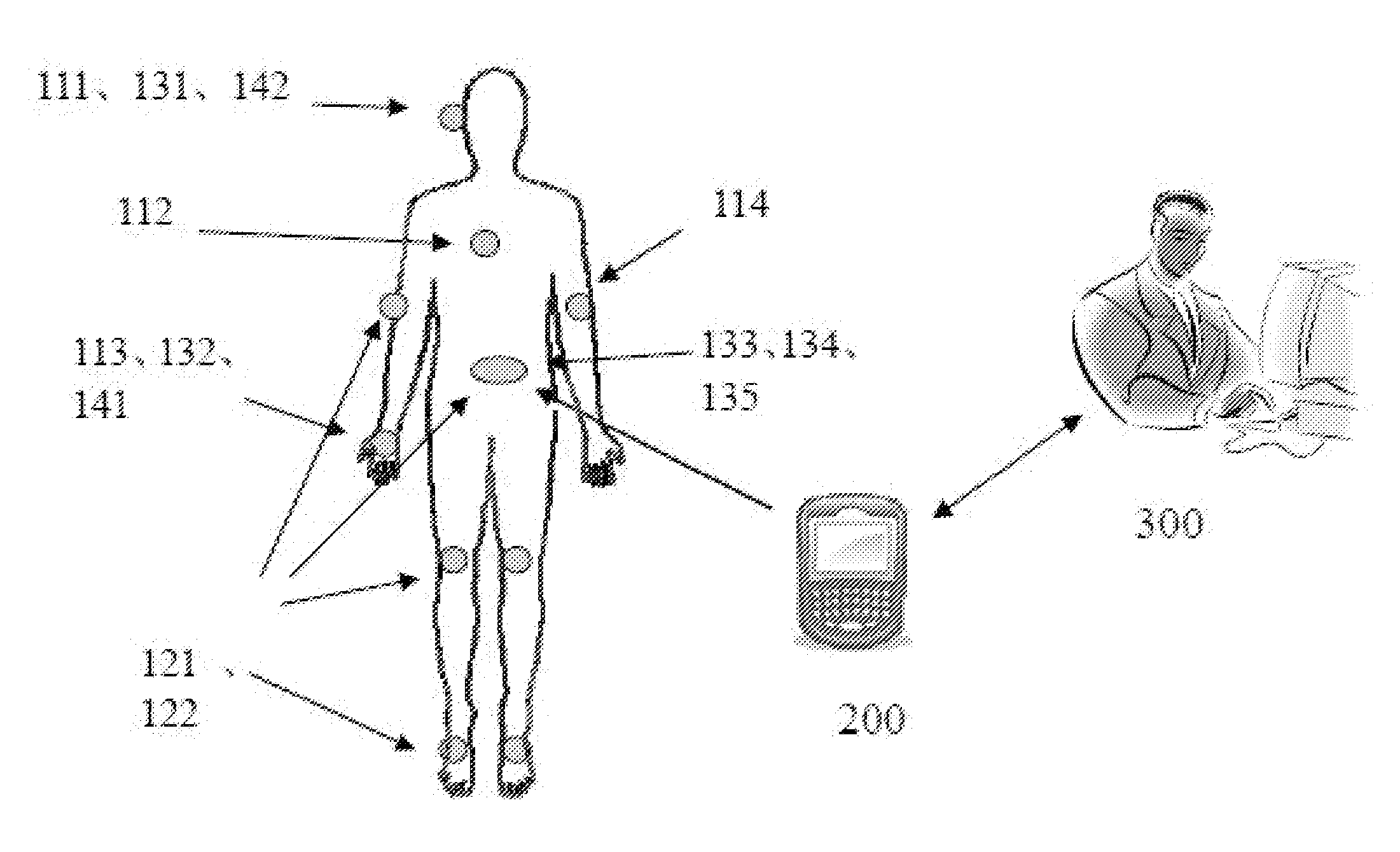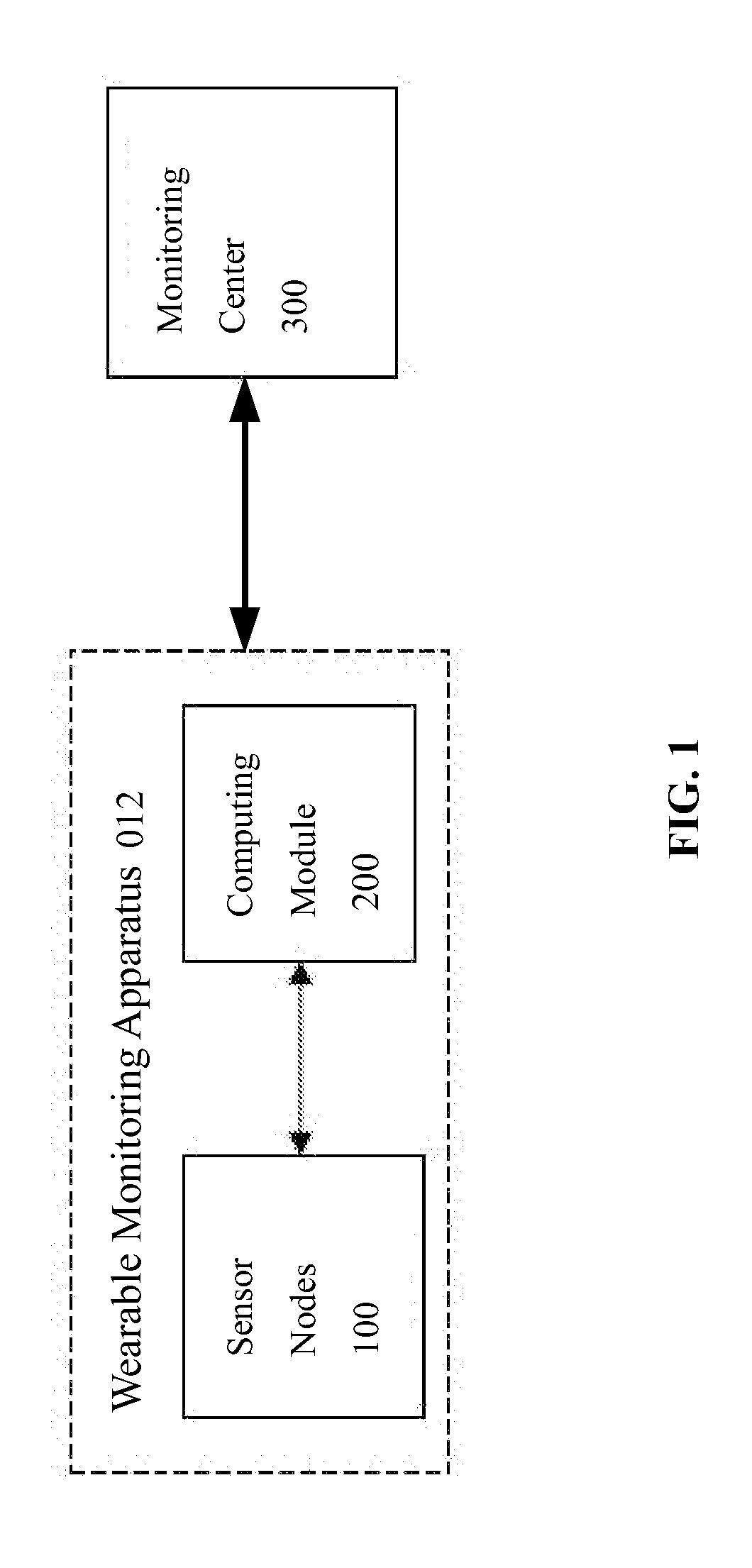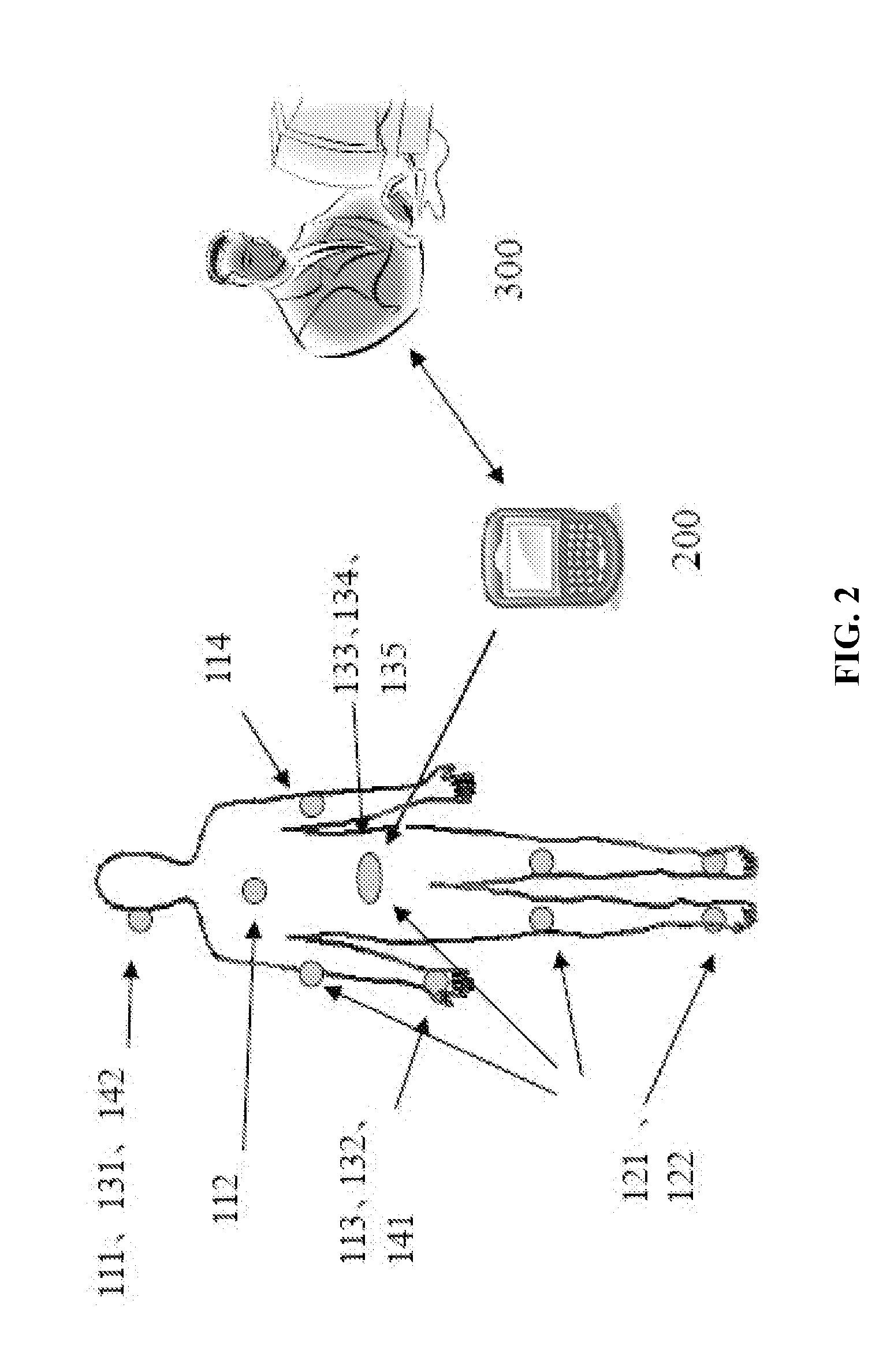Body sign dynamically monitoring system
a dynamic monitoring and sign technology, applied in the field of medical and healthcare instruments, can solve the problems of existing wearable medical devices that cannot perform dynamic monitoring and diagnosis, devices that do not measure the wearer's situational information, and medical instruments in hospitals or clinics, so as to reduce hospitalization and mortality rates
- Summary
- Abstract
- Description
- Claims
- Application Information
AI Technical Summary
Benefits of technology
Problems solved by technology
Method used
Image
Examples
Embodiment Construction
[0063]A detailed description of this invention with figures will be given as follows. The embodiment is provided here with the goal of facilitating an understanding of this invention rather than imposing any limitations on the scope of the invention.
[0064]FIG. 1 shows an overall block diagram that includes the structure of this invention, namely, the RBMS. This invention consists of hardware and software components that form a type of body sensor network. It consists of a WMA 012 and a monitoring center 300. Medical experts perform analysis of the data in the monitoring center 300 to provide timely medical services. The WMA 012 consists of one or a few sensor nodes and a computing module 200. Sensors in the sensor nodes 100 are adhered to the skin or implanted in the body to collect physiological, activity, environmental, and physiological data. Sensor nodes connect to the corresponding computing module 200. The computing module 200 processes and integrates the information and deduc...
PUM
 Login to View More
Login to View More Abstract
Description
Claims
Application Information
 Login to View More
Login to View More - R&D
- Intellectual Property
- Life Sciences
- Materials
- Tech Scout
- Unparalleled Data Quality
- Higher Quality Content
- 60% Fewer Hallucinations
Browse by: Latest US Patents, China's latest patents, Technical Efficacy Thesaurus, Application Domain, Technology Topic, Popular Technical Reports.
© 2025 PatSnap. All rights reserved.Legal|Privacy policy|Modern Slavery Act Transparency Statement|Sitemap|About US| Contact US: help@patsnap.com



